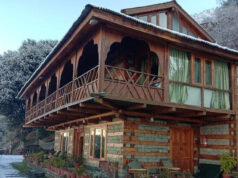Kath Kuni architecture is a traditional style of architecture found in the Kullu region of Himachal Pradesh, India. The unique style is characterized by the use of locally available materials like stone and wood and a construction technique known as the Kath Kuni technique. This technique involves the use of wooden beams and stone slabs to construct the walls of the buildings, with the gaps between them filled with small stones and covered with mud.
The buildings constructed using the Kath Kuni technique are not only strong and durable but also sustainable and eco-friendly. The materials used are locally sourced, and the construction technique blends seamlessly into the natural environment. The roofs of the buildings are made of slate or wooden shingles, and the interiors are decorated with intricate wood carvings and paintings.
Kath Kuni buildings are multi-level structures that feature a central courtyard or open space that serves as a gathering area. The buildings have been used for a variety of purposes, including homes, temples, and community spaces. The simple and elegant design of these buildings is a reflection of the traditional way of life in the Kullu region.
In recent years, efforts have been made to preserve and promote Kath Kuni architecture. Various organizations and initiatives have been launched to showcase the architecture and provide training to local craftsmen in the Kath Kuni technique. The promotion of Kath Kuni architecture has also contributed to the tourism industry of the region, as visitors from around the world come to admire the unique beauty of the Kath Kuni buildings.
The Kath Kuni architecture is a sustainable and timeless tradition in the Kullu region of Himachal Pradesh. The unique style of construction using local materials and blending seamlessly into the natural environment has been passed down through generations. The promotion and preservation of Kath Kuni architecture will not only help in preserving the region’s cultural heritage but also promote sustainable tourism.






